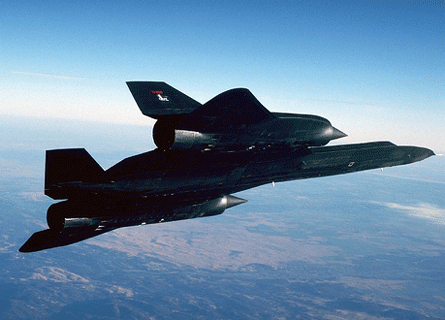
6. Supermarine Spitfire
Seldom can an aircraft have become so synonymous with a moment in time, a military campaign and a nation.
Although the Spitfire served with RAF units from 1938-57, it was its performance in the summer and autumn of 1940 in the skies over the UK that both created and sealed its reputation. While more squadrons during the Battle of Britain were equipped with the Hawker Hurricane – sturdier and no less loved by its pilots – it was the Spitfire’s elegant, thoroughbred lines that captured the public’s imagination.

Ironically, the first aircraft to bear the name had been distinctly short of elegance. Supermarine’s chief designer, RJ Mitchell and his team had created a gull-winged, open-cockpit monoplane with a heavily spatted undercarriage to meet Air Ministry Specification F7/30 of 1931. First flown in 1934, it quickly proved a disappointment and was not selected for service.
Mitchell’s team then looked to their company’s ultra-streamlined Schneider Trophy-winning seaplanes for inspiration. Their design for the Supermarine Type 300 featured retractable undercarriage, an enclosed cockpit and the newly-developed Rolls-Royce Merlin powerplant. The Air Ministry wrote a new Specification around this design and ordered 310 in July 1936.
Mitchell’s design, with its slim, elliptical wing and compound curves, was technically more complex than the Hurricane and much trickier to production engineer, but was highly efficient.
The design was also capable of huge development, as demonstrated by the number of Marks that reached service and by the installation of a new engine, the Griffon. (Late versions of the latter engine in the Seafire naval variant developed more than double the horsepower of the original 1030hp Merlin.)
Indeed, the Spitfire was the only Allied fighter to remain in production throughout the Second Word War, with more than 22,000 being built.
Some variants were more successful than others. As a carrier-borne fighter its reputation was mixed, its lack of visibility over the nose when approaching a pitching deck and relatively narrow-track undercarriage resulting in many accidents. But as one of the most beautiful aircraft ever to fly, its reputation remains undimmed today.
10. Lockheed SR-71 Blackbird
The SR-71 was one of the most spectacular pieces of equipment to emerge from Lockheed’s ‘Skunk Works’ under the leadership of Clarence ‘Kelly’ Johnson.
|
|
|---|
© Lockheed Martin (Flickr) |
Its remarkable attributes are well-known: capable of travelling at Mach 3.2 at heights over 85,000ft (26,000m) over a range of 5,900km, the SR-71 was a mainstay of the US strategic reconnaissance force from 1968-90. (Several aircraft were briefly reactivated from 1995.)
The aircraft’s design looks futuristic even today. Indeed, Lockheed notes that almost every area of its design required new approaches or breakthroughs in technology. More than 90% of the airframe, for example, was constructed from titanium composite, to cope with the friction heating generated by its speed.
15. Lockheed C-130 Hercules
Assault transport, psychological warfare aircraft, gunship, tanker, waterbomber…there are not many roles that the C-130 Hercules has not undertaken in its career.
It is now 54 years since the first flight of Lockheed’s tactical transport and the production line continues to roll, 2,300 examples on.
The Hercules’ configuration of high wing and upswept rear fuselage, with a ramp capable of being opened in flight to drop men or supplies, has become the norm for tactical transport aircraft ever since. The first of two prototypes made its maiden flight on 23 August 1954. The first production aircraft flew on 7 April 1955, and delivery to Tactical Air Command units begin in December 1956. Assembly is carried out at the Lockheed plant in Marietta, Georgia.
16. North American P-51 Mustang
Archive
Born out of an urgent British requirement for new fighter aircraft in 1940, the P-51 became one of the all-time great fighters.
Approached by the British Air Purchasing Commission to build Curtiss P-40s for the UK, North American’s president, James Kendelberger instead proposed a new design. The commission agreed, so long as a prototype was available in 120 days; the first XP-51 was available in 117.
With its laminar-flow wing and Allison V-1710-39 engine, the early P-51s were highly-rated for low- and medium-level roles such as ground attack and tactical reconnaissance. When the airframe was matched with a Packard-built Merlin, however, a different beast emerged. This was equally adept at high-level work and became a formidable air-to-air performer. Indeed, with almost 5,000 enemy aircraft destroyed the Mustang became the deadliest Allied fighter in the European theatre of operations.
17. Lockheed Martin F-16 Fighting Falcon
Starting life as a relatively ‘cheap and cheerful’ day fighter designed to be sufficiently affordable to buy in quantity, the F-16 has matured into the West’s pre-eminent fourth-generation multi-role fighter, with more than 4,300 bought by 25 nations.
The F-16 grew out of the Lightweight Fighter programme of the early 1970s, which saw the General Dynamics YF-16 win a fly-off against the Northrop YF-17.
Expansion of the aircraft’s missions and capabilities began almost immediately after service entry and modern Block 50/52 and Block 60 aircraft are very different creatures from early F-16s. Although due to be replaced by the F-35 Joint Strike Fighter from early in the next decade, Lockheed Martin is confident of several hundred further orders in the next few years.

100 Greatest
Top 10 | 11-20 | 21-50 | 51-100
Top 5s
Civil Aircraft | Military Aircraft | Person | Moment | Engine
Through the decades
Civil Aircraft | Military Aircraft | Person | Moment | Engine
Source: FlightGlobal.com

















